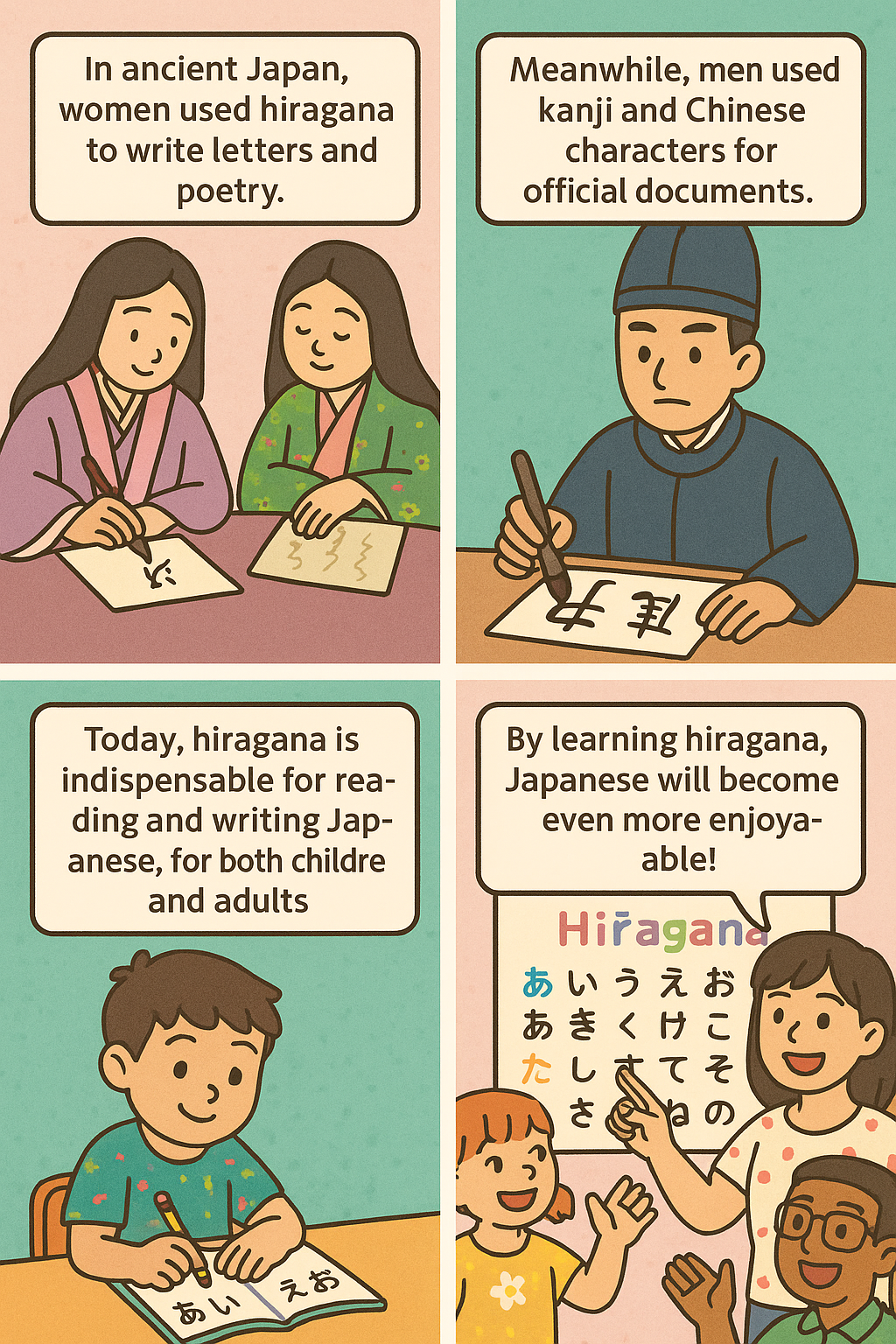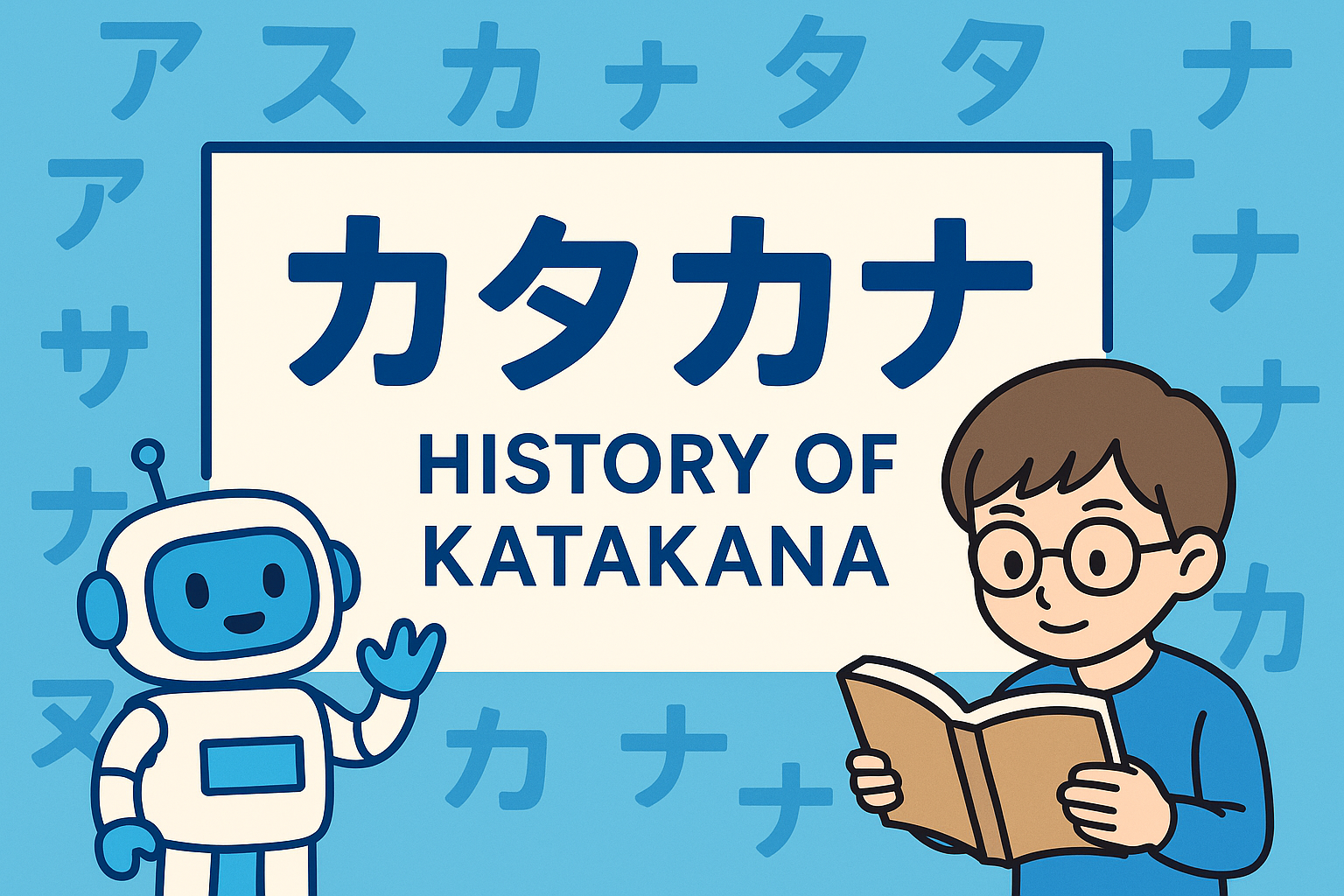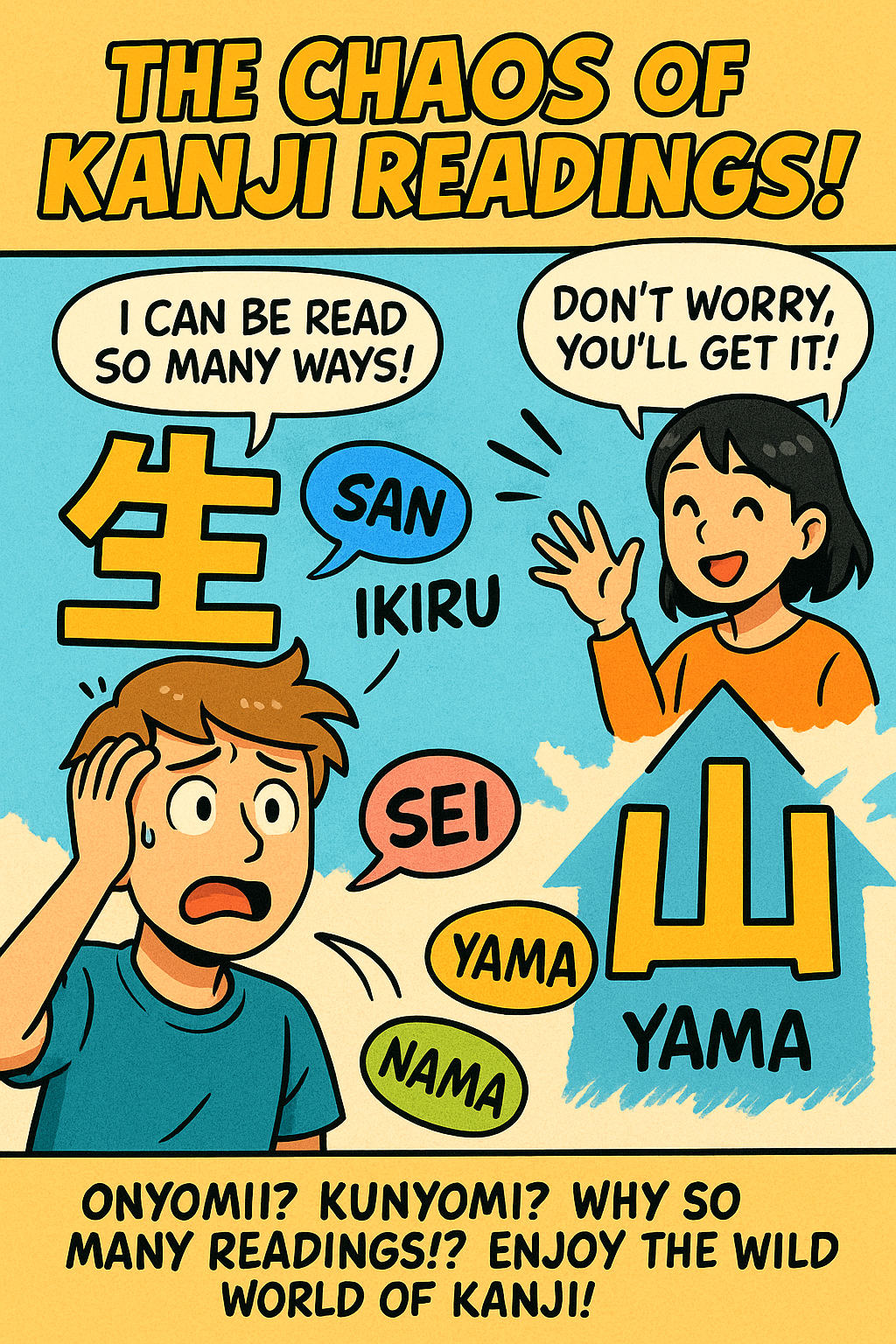
ひらがなとは? / What is Hiragana?
ひらがなは、日本語で使われる三つの文字体系(ひらがな・カタカナ・漢字)のうち、最も基本的でやさしい文字です。
ひらがなは、音を表すための「表音文字」として、日本語のすべての音を正確に表せるのが特徴です。
小学校では最初に習う文字であり、子どもの本や教科書、サインや案内板など、私たちの生活のあらゆる場面で使われています。
また、日本語を学ぶ外国人にとっても、最初に覚えるべき文字です。
Hiragana is the simplest and most fundamental of the three Japanese writing systems: hiragana, katakana, and kanji.
As a “phonetic script,” hiragana can represent every sound in Japanese precisely.
It’s the first script children learn in elementary school and is found everywhere in daily life—children’s books, school textbooks, signs, and instructions.
For people learning Japanese as a foreign language, hiragana is the essential first step.
ひらがなの起源と進化 / Origins and Evolution of Hiragana
ひらがなの歴史は、およそ1200年前の平安時代に始まります。
もともと日本では、中国から伝わった漢字(かんじ)だけを使って文章を書いていましたが、日本語独自の発音や表現には漢字だけでは不便でした。
そこで、漢字をくずして書いた草書体(そうしょたい)をさらに簡単にし、日本語の音を表すための新しい文字「ひらがな」が誕生しました。
ひらがなの原型となる「万葉仮名(まんようがな)」は、漢字を日本語の音で読ませる工夫から始まっています。
The history of hiragana begins about 1,200 years ago, during the Heian period.
At first, Japanese people wrote using only kanji (Chinese characters), which were introduced from China. However, kanji alone were inconvenient for expressing Japanese sounds and grammar.
To solve this, people simplified the cursive form of kanji (“sōshotai”), eventually creating new characters called “hiragana” to represent Japanese sounds.
The earliest version, called “Manyōgana,” used kanji as phonetic symbols for Japanese sounds.
女性たちとひらがなの普及 / Hiragana and Women’s Literature
ひらがなは、誕生してしばらくは主に女性の間で使われていました。
平安時代の宮廷では、男性は正式な文書や記録に漢字や漢文を使いましたが、女性は日常のコミュニケーションや物語、和歌、日記などにひらがなを使いました。
紫式部が書いた『源氏物語』や、清少納言の『枕草子』など、世界的にも有名な日本文学の名作は、ひらがながなければ生まれませんでした。
こうした文学を通して、ひらがなは日本文化や表現の豊かさを広げる大きな役割を果たしました。
Hiragana was mainly used among women in the early years after its creation.
In the Heian period court, men used kanji and classical Chinese in official documents, while women used hiragana for everyday communication, stories, poetry, and diaries.
Famous works like “The Tale of Genji” by Murasaki Shikibu and “The Pillow Book” by Sei Shōnagon would not exist without hiragana.
Through this literature, hiragana helped expand the richness and beauty of Japanese culture and expression.
ひらがなの形と名前の由来 / Shapes and Origins of Hiragana
ひらがな一文字一文字には、もとになった漢字があります。
例えば「あ」は「安」、「い」は「以」、「う」は「宇」、「え」は「衣」、「お」は「於」という漢字を簡単にした形です。
他のひらがなも、古い書物や辞典には「元になった漢字」と「ひらがな」の比較がたくさん載っています。
こうした知識を知ると、ひらがなの形に親しみがわき、覚えやすくなります。
Each hiragana character has its origin in a particular kanji.
For example, “あ” comes from “安,” “い” from “以,” “う” from “宇,” “え” from “衣,” and “お” from “於,” all simplified forms.
Old books and dictionaries often show comparisons between the original kanji and the modern hiragana.
Learning this can make hiragana shapes more familiar and easier to remember.
現代のひらがなの役割 / The Role of Hiragana Today
現代の日本語では、ひらがなは文法を支える大切な役割を担っています。
助詞(が、に、を、で など)や動詞の活用部分、送り仮名、そして子ども向けの本や看板にも多用されます。
さらに、難しい漢字の上に「ふりがな」としてひらがなを書くことで、小さい子や日本語学習者も簡単に読めるようになっています。
テキストメッセージやSNS、マンガでも、ひらがなのやさしいイメージや柔らかい印象を活かした表現が人気です。
In modern Japanese, hiragana plays a key role in supporting grammar.
It is used for particles (such as が, に, を, で), verb inflections, okurigana (inflectional endings), and is common in children’s books and signs.
Furigana, or small hiragana written above difficult kanji, makes reading easier for children and Japanese learners.
In text messages, social media, and manga, the gentle and friendly look of hiragana is often used to create a soft impression.
ひらがなを学ぶコツとおもしろ知識 / Tips and Trivia for Learning Hiragana
ひらがなは全部で46文字ですが、濁点(゛)や半濁点(゜)をつけると「が」「ぱ」などの音も表せます。
小さな「ゃ」「ゅ」「ょ」や「っ」もあり、やさしい音のバリエーションが豊富です。
ひらがなは直線や曲線が多く、筆やペンで書くときのバランスや形の美しさも日本らしい魅力の一つです。
覚えるコツは、よく見て、何度も書き、声に出して読むことです。
街中やテレビ、パッケージなど、身近な場面でひらがなを探してみるのもおすすめです。
There are 46 basic hiragana characters, but by adding marks called “dakuten” (゛) or “handakuten” (゜), you can create additional sounds like “が” or “ぱ.”
Small hiragana like “ゃ,” “ゅ,” “ょ,” and “っ” also exist, giving Japanese a rich variety of gentle sounds.
Hiragana is known for its flowing curves and balanced shapes, adding to its unique beauty, especially when written with a brush or pen.
To learn hiragana, look at them carefully, practice writing them, and say them out loud.
Try spotting hiragana on signs, TV, and packaging in your everyday life!

